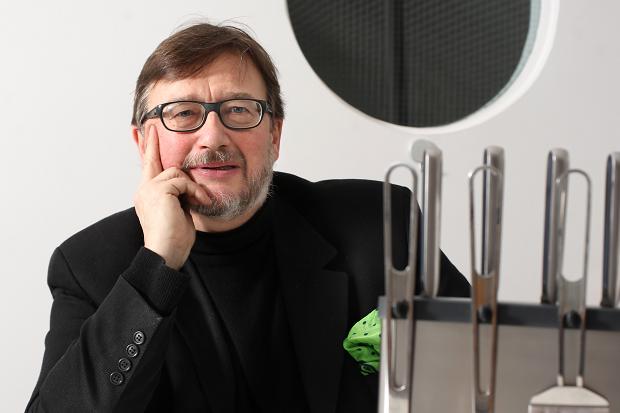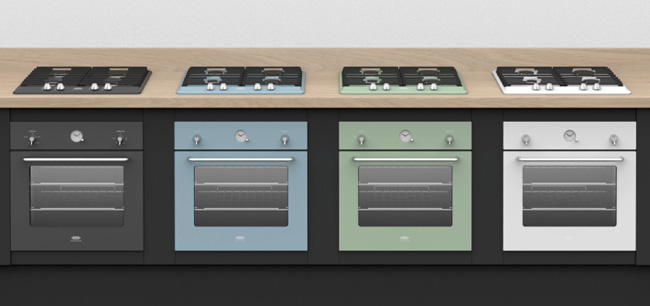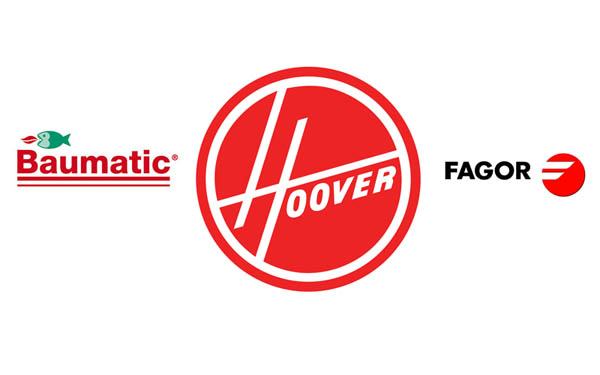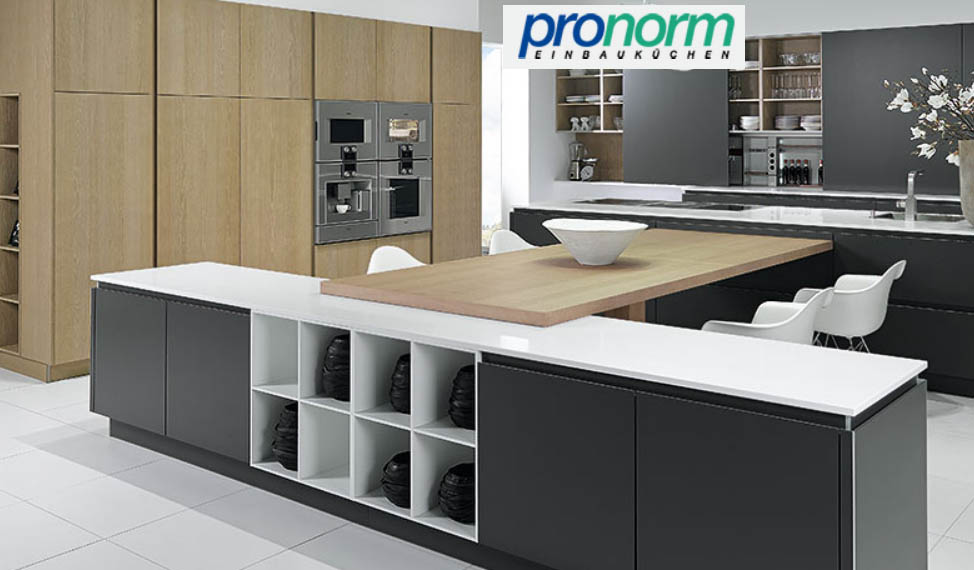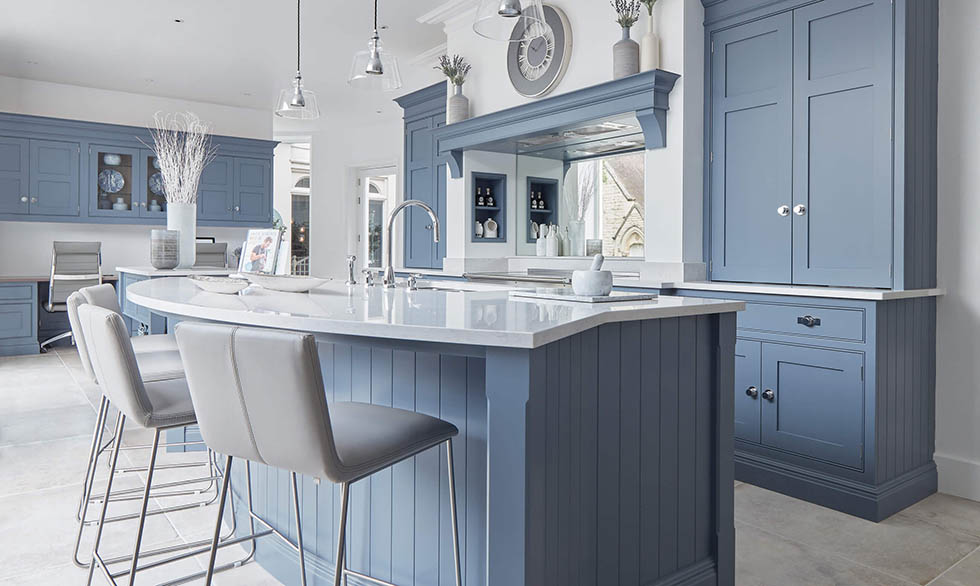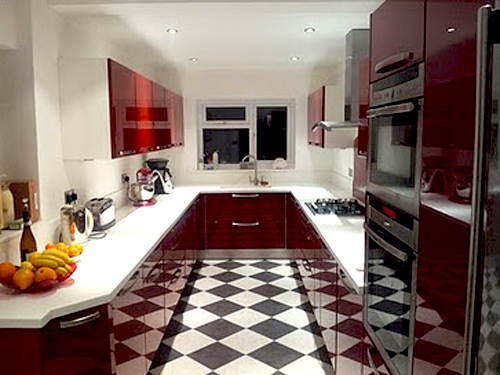British designer Sebastian Conran has worked with some of the biggest and most successful brands in the world, including John Lewis, Virgin Atlantic and Nissan.
Here, he talks to Rebecca Nottingham (at kbbreview.com) about his latest project - a collaboration with iconic British brand Belling
What attracted you to work with Belling on its latest project, the Belling Design Sebastian Conran collection?
My first cooker was a Belling. It’s an iconic British brand, one that everybody’s grown up with. I enjoy the fact that it celebrates manufacturing and design in Britain. So, I was keen to work with Belling, because I felt there was a common mind-set between them and my design studio. I like their design team and we had a great collaboration. The whole process from concept to consumer has been around a year and the quality is outstanding. Belling is a heritage brand but what we’ve created is, without a doubt, a 21st century product.
What was your inspiration for the range?
We aim to create designs that are inspirational and aspirational as well as accessible. I’ve been designing cookware for decades and, as a keen cook, I aimed to create a collection that brings beautiful and functional design into the kitchen. We’ve combined something that is great-looking with something that works really well to improve the kitchen experience. We’ve tried to design appliances that are timeless, relevant and functionally innovative. It’s a collection of products that will be the antiques of the future.
You’re no stranger to the bathroom industry either, having designed the ground-breaking Aveo range for Villeroy & Boch. Tell us about the new generation products from this range?
When I told Villeroy & Boch that my inspiration for the Aveo collection was an egg, they took some convincing. That bath has actually gone on to become one of V&B’s best-selling products. For me, the egg form really lends itself to ceramics. We’ve refined the design even further as it’s been out in the field for 10 years. We’ve introduced new technology, so, for instance, we’re now able to make the bath how I originally intended, without the split line around it. I’m very, very pleased with how the new generation collection looks.
How do you know when a design has been commercially successful?
When Villeroy & Boch approached me to update the original Aveo collection, I said ‘don’t you want me to design a completely new range?’ But their reply was ‘no, because you did such an incredibly good job the first time’. That for me is very pleasing, because it means I’ve managed to design a product that’s going to be in production for 20 years, which Aveo looks like it might be, and that’s a real achievement.
Do you think we’ve reached the peak of design and creativity in the KBB industry?
The Victorians said that everything that could be invented, had been invented. Where we’re at now is that the rate of technological change we’re going through is so fast-paced. Computers don’t have any imagination, they’re tools and are only as good as the person using them. What’s so great about them is that they enable industry to reproduce products quickly, easily and efficiently. The way we make things is completely changing and these techno-logical advancements mean that, in my opinion, ‘we ain’t seen nothing yet’ in terms of the way things are designed and made.
How impressed are you with the overall level of design in the KBB industry?
However good your product is, if it’s not what people want at that time, you’re stuffed. What I try to avoid designing are bright, fashionable plastic products that will brighten up kitchens for a short while until people get bored with and bin. My aim is always to design products that will be around for a long, long time. I think the current zeitgeist is austerity and we have a responsibility to create lasting design not products people can use once and then throw away.
Do you think the influx of Chinese produced products has affected the industry? Do you think there’s any chance Britain will ever become a hub for manufacturing again?
Manufacturing technology is changing, the fleeing of manufacturing from the UK to the Far East was driven by the invention of the universal shipping container in the 60s. It took a while for China to tool up and understand how to make stuff. It’s always been cheaper to manufacture in China, but before the shipping container, it didn’t really matter because the cost of transporting it would have been too expensive. Now we’re in a situation where actually we want to make things closer to home, so that we’re not forced to keep stock. What I think we’re going to see, going forward, are really flexible production lines that will make it much more feasible to make things closer to where they’re consumed.
What’s your impression of independent KBB retailers and their showrooms?
I would encourage more retailers to give context to the products on display in their showrooms. For a product to be successful, consumers have to be able to imagine what it would look like in their own kitchen or bathroom. When I designed the collection for Belling, we took a look at a lifestyle, researched it and then we created mood boards in order to get the look and feel of the product just right. As designers, we put all this effort into getting it right and then it gets to retail and all too often it’s just plonked in the showroom and no real effort is made to give lifestyle context to it. A bright customer might have the imagination to see how the product would look in their own home, but most of them are too busy or not well informed enough to do it alone.
What companies in the KBB industry are getting design right?
I think an awful lot of them are getting design right. Apart from Belling and Villeroy & Boch, obviously, Vitra are a very interesting brand. I think they’re very bright people and they have a good ethos. They are well worth watching.
What innovations from the KBB industry really stand out for you?
I think it’s ripe for plunder. To me, there’s just so many opportunities out there for even more fantastic innovations. The industry has certainly come a long way, but there is scope for far more. Take the hood I’ve designed for Belling, it features a storage shelf and a rail you can hang utensils off. Simple but effective. It’s not rocket science, you only have to look at a kitchen and see that storage is a big issue so why not make clever use of functional space.
As a designer, how do you balance creativity with commercial needs?
Form follows fabrication: you’ve got to know how it works. Form follows fashion: it has to be launched at the right time to succeed. Form follows feelings: you need to have an emotional content to the product. Form follows finance: anyone can design something that’s expensive and complicated to make, but part of the challenge is producing beauty out of the least amount of difficulty and that is good design. Making things inspirational, accessible and aspirational.
Kitchens Kitchens Jeff Russell:
Sebastian, aside from being a designer and a well respected one does very much understand the commercialisation of the products he designs and his comments in response to the question, “What’s your impression of independent KBB retailers and their showrooms?” were right on the nose.
Whilst some kitchen showrooms have some fantastic displays you can’t help but notice that they are lacking the “lifestyle context” as Sebastian says and are somewhat cold, and bland and as such wont excite a potential buyer.
Doing a walkabout in kitchen showrooms across the North West, I visited about 30 different showrooms, from all different types of kitchen companies, from small independents, branded dealers and a couple of big sheds like Homebase and only three or four showrooms had adopted this principle of lifestyle context and whilst Tru kitchens in Wilmslow who showcase German kitchens by Rempp and British-built Hamilton Drake had a stunning showroom, I felt that Kitchen Kraft in Northwich were out in front as the entire showroom was roomy, with great displays, and very much customer focused, but where it outperformed every other showroom I have seen lately was in lifestyle context as every single kitchen display, from their luxurious Metris brand through to the Shaker style was complete with place settings, glassware, and such and its these little touches that help the customer visualise themselves in that kitchen.
One showroom we went to in Warrington for an independent was truly awful with a cold and drab interior, poorly finished displays and when you opened up the tall larder units the internal frame shelving rattled and it just didn’t have any warmth to it, and as such you wouldn’t expect consumers to be impressed enough to buy.
When the kbb industry is under so much pressure in a stagnant market you have to up your game and poor showrooms and lack of lifestyle context is something that can make or break consumers first impressions and mean the difference between staying afloat or going under and a poor showroom is the one thing that the kbb showroom owner has total control over and only themselves to blame if the standard isn’t up to scratch.
For more info on British designer Sebastian Conran see his website at: sebastianconran.com
